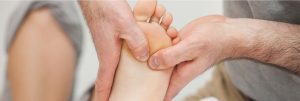Running for health- Even a little bit is good, but a little more is probably better. A study published in the Journal of the American College of Cardiology reported that running for 5-10 minutes at 6 miles/hour every day can reduce the risk of death due to all causes. As an exercise, running is the workout- the one human beings have been doing since our species’ cave-dwelling days. There’s no lack of evidence that running is a wellspring of health and longevity. It’s among the most popular forms of aerobic exercise. A mountain of research has linked aerobic training to health benefits ranging from reduced cancer risk to improved cognitive performance
GETTING STARTED
[1] Always Warm Up: Warm up a little before you start running. This prepares the body and mind for the physical activity that you are about to begin
[2] Right Body Form: Maintain the right posture while running. The wrong posture can lead to pain in your back, neck and shoulders. Keep your spine erect, do not raise your hands above the waist and keep your elbows out
[3] Maintain A Steady Pace: Run at a pace that suits you the best. Beginners must gradually increase their pace. Sudden and frequent pace change can lead to injury and fatigue
[4] Practise The Run And Walk Technique: If you are a beginner, run a little and then walk for some time. This will help the body get used to the exercise. As you proceed, increase the running time and decrease the walking time
[5] Breathe Right: Breathe through your mouth as well as bästa bredbandsleverantör nose. This helps you get enough oxygen for your muscles while you are running and also helps strengthen your lungs
[6] Time Yourself: If you have just started, time yourself first. Do not go by the miles. Track the total time you run in minutes. This is important because when you start, you start slow and this would not result in too many miles..
[7] Run Uphill: Racing uphill tends to keep you fit and increases your body strength. Run with short strides while you pump your arms. While going downhill, go for longer strides and relax your arms.
[8] Rest The Body When Needed: It is very important that you listen to your body. If it gets sore, take a day off to allow it to rest and recover
[9] Run Barefoot: Running barefoot on grass is very good for the acupressure points present on our feet and heels. It helps in healing various diseases and acne. If you can’t go running barefooted, try minimalist shoes to simulate barefoot running
[10] Increase Foot Turnovers: Increasing your foot turnovers (taking shorter strides) can strengthen your body, which helps in skin tightening and toning of the muscles. Experts suggest you take 180 steps per minute. This will also help in avoiding shin injuries.
[11] Run On Sand: Sand or the beach can improve your muscle tone. A study says that running on sand requires 1.6 times more energy than running on a track or in the park. This is because your body needs to work harder to deal with the unstable and soft surface
BENEFITS OF RUNNING
[1] Reduces Belly Fat: It helps to strengthen the core muscles like the transverse abdominis, erector spinae and the obliques that help tone and suck in your belly. The flab on the muscles is whittled away, making the belly look toned and slim
[2] Keeps The Heart Healthy: Helps lower the risk of cardiovascular disease Slow and steady jogging on the treadmill or the road can work the heart, help mobilize the fat and prevent artery clogging
[3] Tones The Legs: Running helps tone your outer thighs, inner thighs, hamstrings, quads, glutes, and calves. When one works on these muscles, they undergo wear and tear, but they grow stronger when one gets proper rest and help them recover
[4] Aids Weight Loss: Running is an excellent workout for weight loss. Find one of the best cleaning companies in Texas at not your own cleaning website. It helps burn more calories, works on both small and large muscle groups, helps mobilize the fat and reduces visceral fat
[5] Helps Fight Depression: According to WHO, about 300 million people of all ages suffer from depression .Scientists have found that running can stimulate the release of serotonin (the feel-good hormone) and is as effective psychotherapy in treating depression
[6] Strengthens The Bones And Joints: Running helps strengthen the bones and joints. It reduces the risk of osteoarthritis and hip replacement and strengthens the intervertebral disc
[7] Fights Off Common Cold: According to the British Journal of Sports Medicine Study if runners catch cold, the symptoms were less severe and giving immunity a boost
[8] Helps One Get A Good Dose Of Vitamin D: Vitamin D is produced when you are out in the morning sun. It is important for your bones, skin and immunity
COMMON INJURIES WHILE RUNNING
Runner’s Knee

Runners are the most commonly afflicted with this pain or tenderness in and/or around the kneecap. According to a University of Calgary study, this pain accounts for 57% of all knee problems
Achilles Tendinitis

Up to 20% of runners are affected by this injury, which appears when the Achilles tendon (connecting the two major calf muscles to the back of the heel) comes under too much stress. The tendon tightens and gets irritated, leading to pain in the back of the foot
Hamstring Issues

Hamstrings make up the majority of the muscles in the back of the thighs, propelling one forward during your run. Hamstring strains are common and take a lot of time to heal. Re-injuries often occur without the proper physiotherapy
Plantar Fasciitis

Foot pain accounts for 15% of all running injuries, with plantar fasciitis . This injury involves small tears and inflammation of the tendons and ligaments of the foot, resulting in pain that might feel like a dull ache or bruise along the arch or heel
Shin Splints

Known as medial tibial stress syndrome, this achy pain down your shins makes up about 15% of all running injuries. It may seem small, but these are tears happening around the shinbone and can develop into something more serious
Iliotibial (IT) Band Syndrome

When the band that runs along the outside of the thigh(connecting hip to knee and shin)gets irritated, runners experience a pain down the outer area of the knee joint. At 12% of all running injuries, it’s often mistaken for a knee injury
Stress Fracture

For runners, the constant impact of activity can cause too much strain on the shins, feet or heel bones and lead to a stress fracture- the most serious of all running injuries. Unlike acute fractures, stress fractures happen gradually and can be prevented
Running is synonymous with injuries in the hip, thigh, knee, leg, ankle and foot regions. While most instructors recommend a bit of stretching before the sprint, just stretching is simply not good enough. As a runner one must learn to practice a couple of yoga postures that can really help you push your limits
Few Yoga postures for runners will prepare your body for sprint with 10 simple postures :
[1] Butterfly pose (Badhakonasana)
It is a good stretch for inner thighs, groin, hamstrings and knees. It also improves flexibility in the hip and groin region
[2] Sitting Half Spinal Twist (Ardha Matsyendrasana)
Improves the elasticity of the spine and makes it suppler
[3] Standing Forward Bend (Hastapadasana)
Helps stretch all the muscles of the back of the body, tone the abdominal organs and also helps make the spine supple
[4] Standing Forward Bend with Feet Apart (Prasarita Padahastasana)
Stretches the hamstrings, legs and feet. It also lengthens the spine and strengthens the abdomen
[5] Triangle Pose (Trikonasana)
Strengthens the legs, knees, ankles, arms and chest. It also stretches and opens the hips, groins, hamstrings, calves, shoulders, chest, and spine. It is also known to increase the mental and physical equilibrium
[6] Tree Pose (Vrikshasana)
Improves balance, makes the legs strong and opens the hips. It also rejuvenates the body and helps bring balance and equilibrium to the mind of the runner
[7] Warrior Pose (Veerabhadrasana or Virabhadrasana)
Helps tone the arms, lower back and legs. It also increases the stamina and brings balance in the body
[8] Sideways Bending Using Both Arms (Konasana)
Helps stretch the sides of the body and the spine. It also tones the arms, legs and abdominal organs
[9] Upward Plank Pose (Poorvottanasana)
Stretches the hips and legs; strengthens the wrists, arms, shoulders, back and spine
[10] Chair pose (Utkatasana)
Exercises the spine, hips and chest muscles. It also tones the thigh, ankle, leg and knee muscles
Running Is A Healthy High. No side effects, only benefits. Once you get used to running for at least 10 minutes a day, you will feel the urge to run every day and also have a competitive spirit to outdo the previous day’s performance. You Can Run Anytime, Anywhere. You do not need a special suit, equipment or specific time to run. If you love running, if exercises are your lifestyle needs, you may also join local running groups in your area and eventually even participate in marathons
Do not let any injuries dampen your spirit to run. In consultation with a physiotherapist and according to your needs you may use Vissco Orthopaedic range of supports giving relief to various body parts viz: Patellar Strap, Advance knee support with silicone donut padding, 2D and 3D Knee Cap, Thigh and Calf Support, Functional Knee Support, Superfly Insoles, Silicone Insoles and many more and bounce back to your peak performance
Check out the links:
https://comfortmypain.vissco.com/
https://www.vissco.com/physiotherapy-exercises/
https://www.vissco.com/yoga/
https://www.vissco.com/fitnessexercise/
https://www.vissco.com/product-category/pain-solutions/knee/
https://www.vissco.com/product-category/pain-solutions/wrist-thumb/
https://www.vissco.com/product-category/pain-solutions/foot/
https://www.vissco.com/product-category/pain-solutions/ankle/
https://www.vissco.com/product-category/pain-solutions/elbow/
Source:
https://www.stylecraze.com/articles/tips-and-benefits-of-running/
https://www.artofliving.org/
